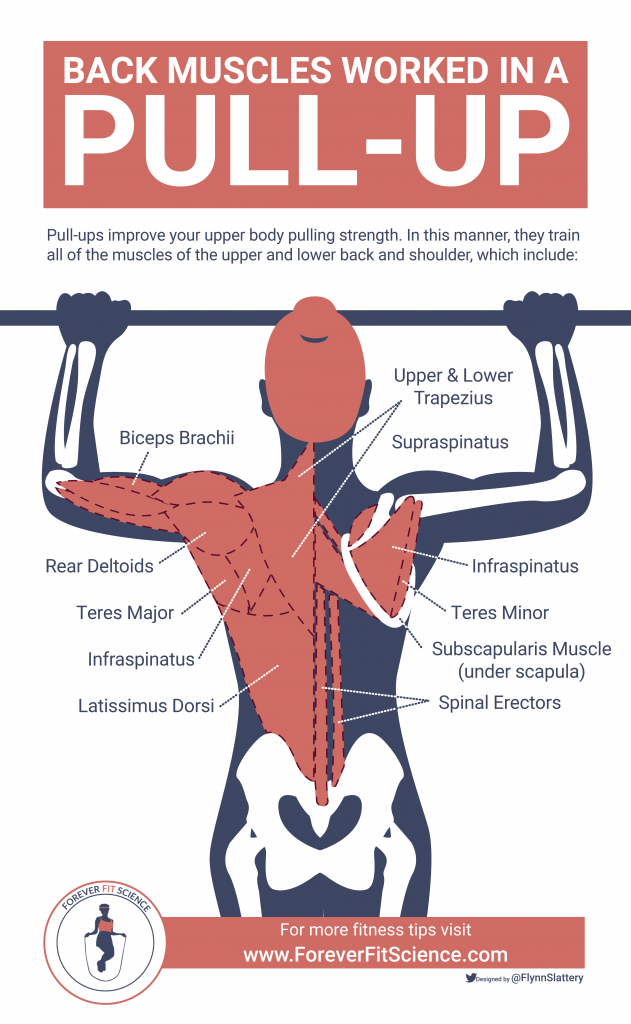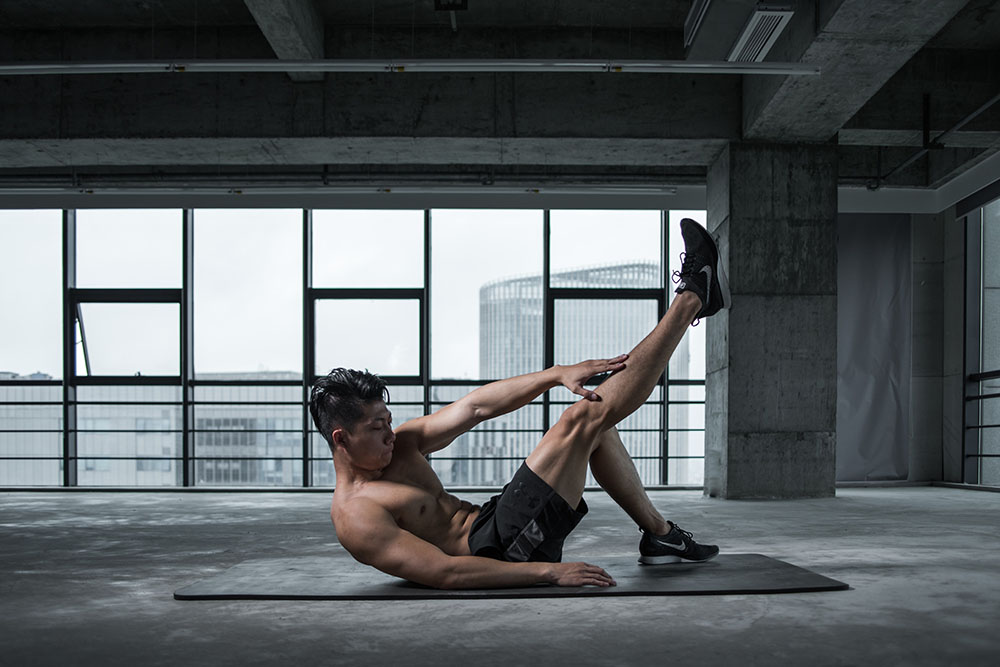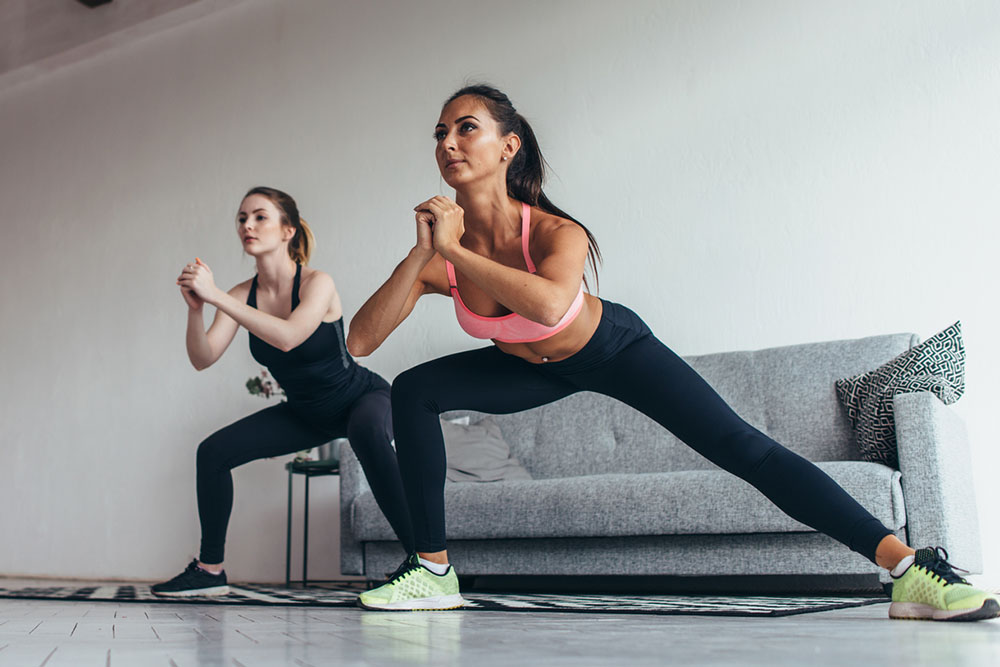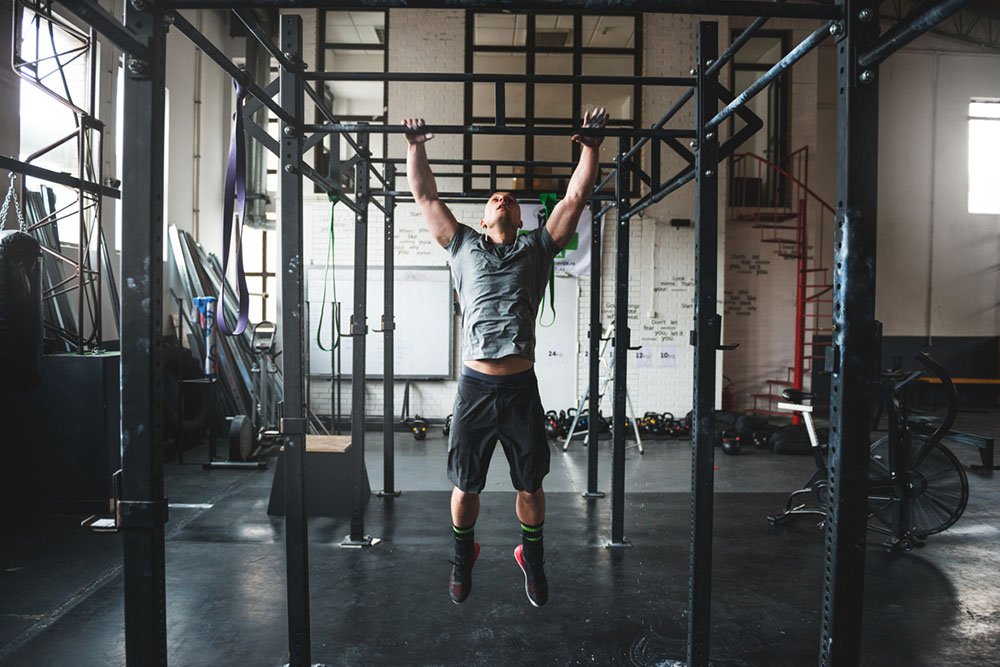Perfecting Your CrossFit Pull-Up
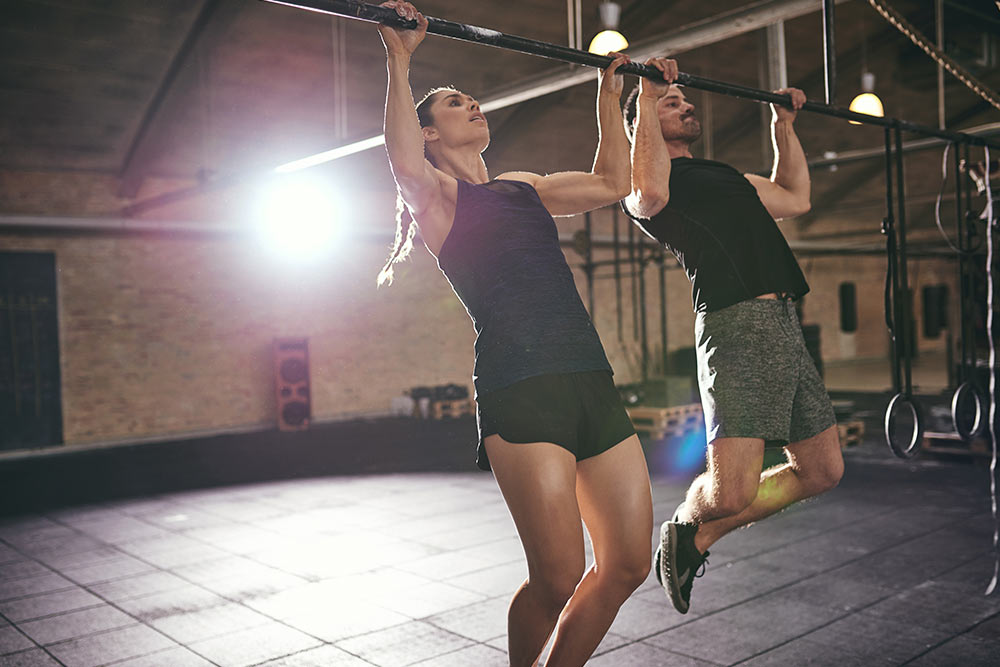
Hunter Bennett
Over the last few years, CrossFit has truly revolutionized the health and fitness landscape. It has changed the way many people look at exercise, while also introducing the many benefits associated with heavy barbell-based strength training to the masses.
With this has come the development and alteration of a number of different exercises tailor-made specifically for CrossFit workouts – with none undergoing more change than the common pull-up.
What is CrossFit?
CrossFit is a specific training modality that has become incredibly popular over the last decade. Differing from many other training methods, it has become renowned for its capacity to optimize nearly every aspect of physical performance simultaneously (Claudino, 2018):
With that in mind, CrossFit states to train ten specific domains of fitness, which are:
- Cardiovascular and respiratory endurance
- Stamina

- Muscular Strength
- Flexibility
- Muscular Power
- Speed
- Neuromuscular Coordination
- Agility
- Balance
- Accuracy
Taking all of this into consideration, a single CrossFit workout is most commonly comprised of several different exercises performed for high repetitions, at a very high intensity, and with minimal recovery time between sets.
It is important to note that within this there is a primary focus on varying functional movements both within and between training sessions.
As such, CrossFit regularly uses gymnastics exercises, weightlifting exercises, and traditional strength training exercises, in conjunction with a number of cardiovascular activities, to build a robust and resilient body that can handle anything that is thrown its way.
And one of the most important exercises that appear within several CrossFit workouts is pull-ups.
Related Article: What Does CrossFit Do to Your Body?
What are pull-ups?
Pull-ups are an upper body exercise that has you hanging from a bar with your arms completely straight. From this position, you pull yourself up over the bar, while driving your chest towards the bar.
In the top position, your chin should be above the bar, and your chest should be up nice and tall.
Now I am sure you can see why they are known as pull-ups (I agree, not all that imaginative, that’s for sure).
While undoubtedly simple in premise, they are far harder than they sound. To successfully perform a pull-up, you need an abundance of upper body strength, a huge amount of core stability, and a high degree of body control.
What are the benefits of pull-ups?
As I have already alluded to, pull-ups are a great upper body exercise (Sanchez-Moreno, 2016; Prinold, 2016).
As a result, they provide one of the most effective ways of developing upper body pulling strength, as well as a strong and stable midsection. As such, they also have the ability to help improve your lower back health and enhance your shoulder stability.
They truly are one of the most bang-for-your-buck exercises on the planet.
Moreover, pull-ups also teach you how to effectively move and control your body through space. This is important because by improving your body control, you directly improve your ability to manage tasks of daily living and increase your functional capacity.
It is this sort of strength and control that keeps you functioning at a high level well into your old age.
What different muscles do pull-ups work?
I have already mentioned that pull-ups improve your upper body pulling strength. In this manner, they train all of the muscles of the upper and lower back, which include:
- Latissimus dorsi
- Rhomboids
- Upper and lower trapezius
- Spinal erectors
- Teres major
They also train all of the muscles surrounding the shoulder and within the rotator cuff, which includes:
- Rear deltoids
- Supraspinatus
- Infraspinatus
- Subscapularis
- Teres minor
- Bicep brachi
Finally, they also train the muscles of the core and midsection, which include:
- Rectus abdominus
- Internal and external obliques
- Transverse abdominus
Like I said, bang-for-your-buck!
What are the different type of CrossFit pull-ups?
Now, there are three types of pull-ups that are commonly used during CrossFit workouts:
- Strict pull-ups
- Kipping pull-ups
- Butterfly pull-ups
Each of these variations are used in several different CrossFit workouts, in which they each have their own unique technical requirements.
Strict Pull Ups
A strict pull up is pretty much the exact variation I discussed above, in which you simply grab the bar and pull yourself up until your chest comes very close to touching it.
Mastering this particular pull up variation is essential to developing the base strength required to successfully complete some more intense CrossFit workouts. Moreover, it is a precursor to the next two pull up variations.
Kipping Pull Ups
Kipping pull-ups are really the next logical step you can take once you are comfortable with your ability to perform a strict pull-up.
Where this variation differs from the strict pull up is in the fact that it requires you to use your hips and torso to drive yourself up towards the bar. While this actually makes the movement easier on the muscles of the back, it requires much more coordination.
In this scenario, start hanging from the bar as you would during a normal pull up. Proceed to drive your hips forward and arch your back, creating a swinging movement.
Once you are comfortable with this movement, simultaneously pull yourself up as you arch your back, allowing yourself to glide up towards the bar. Like a strict pull-up, your chest should come very close to making contact with the bar.
While it will take a few goes to get the timing right, once you have it you won’t forget it!
Butterfly Pull Ups
Butterfly pull-ups are very similar to kipping pull-ups, albeit performed in reverse.
It is for this reason that the motion behind the butterfly pull up is often compared to pedaling a bike backward.
With this variation, start by gripping the bar hard and hollowing out your abdominals. Once you are hollowed out, pull yourself up and back, while kicking your legs towards the ground. This movement should drive your chin up and over the bar.
As you come back down, immediately kick your legs forward to commence the next repetition.
What are the best exercises to improve pull-ups?
Now, you might be wondering how to improve pull-ups – and fortunately, it doesn’t have to be all that complex.
By choosing exercises that strengthen the muscles of the back and improve core rigidity, you essentially have everything you need to develop the base strength required to improve your pull-ups substantially.
And once you add those to a pull up specific movement, you have a recipe for success.
So, with all this in mind, my three favorite exercises to improve pull-ups are:
Band assisted pull up
A band assisted pull up is pretty much exactly what it sounds like – a pull up that has some band assistance!
With this exercise, hang a small resistance band from the chin up bar, and then step into the band so that it is looped around one of your feet. In the dead hang position, you should then feel the band taking a small portion of your weight.
From the hang position, simply perform a normal pull up.
In this scenario, the band makes it a little easier to perform the actual pull up. This makes it the perfect option to get more pull up volume into your training, which can improve motor control and coordination, and help you develop global back strength.
4 sets of 8-12 repetitions is perfect for these.
Related Article: The Rise of CrossFit
Hollow body hold
The hollow body hold is a great core exercise that teaches you how to maintain a strong and stable midsection, which as we know, is integral to pull up success.
Start this movement by lying flat on your back with your arms positioned over your head. Proceed to lift your arms and feet from the ground, and hollow out your body. Your abdominals should be tight, and your lower back should be pressed flat into the ground.
Hold this position for 3 sets of 30-60 seconds, and feel the deep abdominal burn.
Inverted row
Our last exercise, the inverted row, offers one of the most effective ways to improve upper back strength on the planet.
Start by setting up a bar in the squat rack so that it is level with the height of your hips. Then proceed to lie under the bar, with your hands hanging onto it. Only your heels should be making contact with the ground.
In this position, your hips should be high and your body should make a straight line from the top of your head to the bottom of your feet.
From this hanging position, row yourself toward the bar while keeping your chest up tall. Your chest should actually make contact with the bar. At the top of the movement, pause for an entire second, before lowering yourself slowly to the ground.
You should feel a good squeeze in between your shoulder blades after this one.
4 sets of 12-15 repetitions are ideal for these.
Take Home Message
The pull up is one of the most powerful tools in your training arsenal. It has the ability to improve your upper body strength, core stability, and body control. Moreover, it is also an integral component of nearly any CrossFit workout.
Using the tips outlined in this article you can improve your pull-ups in a big way – so what are you waiting for?
References
Claudino, João Gustavo, et al. “Crossfit overview: systematic review and meta-analysis.” Sports medicine-open 4.1 (2018): 11.
Sanchez-Moreno, Miguel, et al. “Determinant factors of pull-up performance in trained athletes.” The Journal of sports medicine and physical fitness 56.7-8 (2016): 825-833.
Prinold, Joe AI, and Anthony MJ Bull. “Scapula kinematics of pull-up techniques: Avoiding impingement risk with training changes.” Journal of science and medicine in sport 19.8 (2016): 629-635.
You Might Like:


